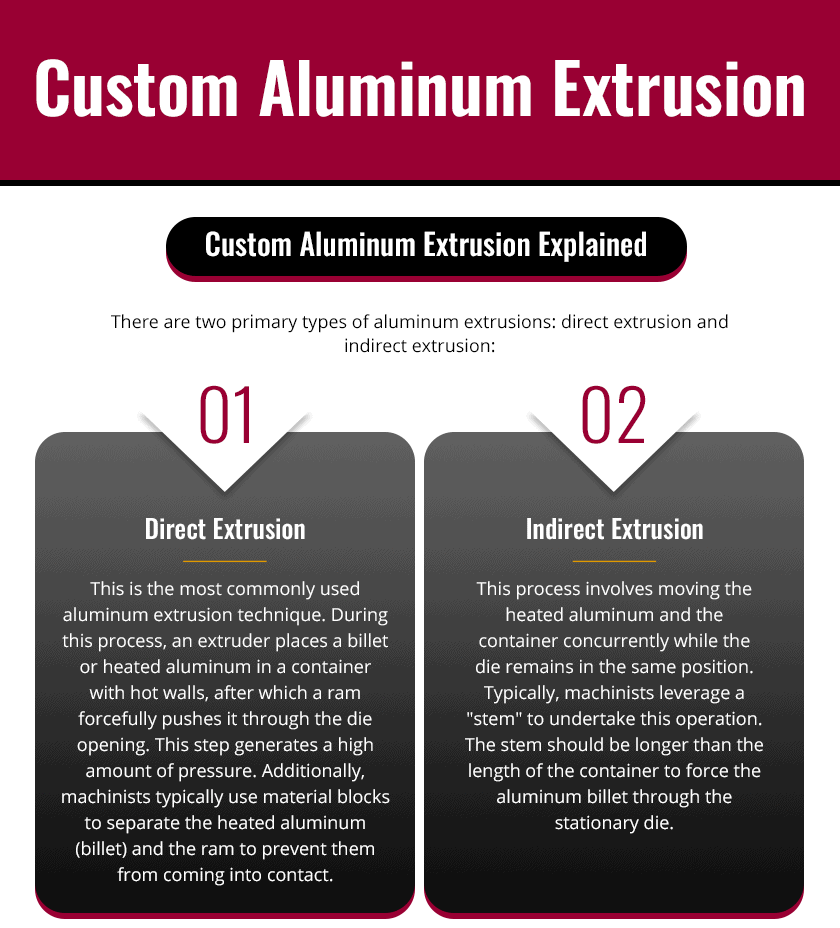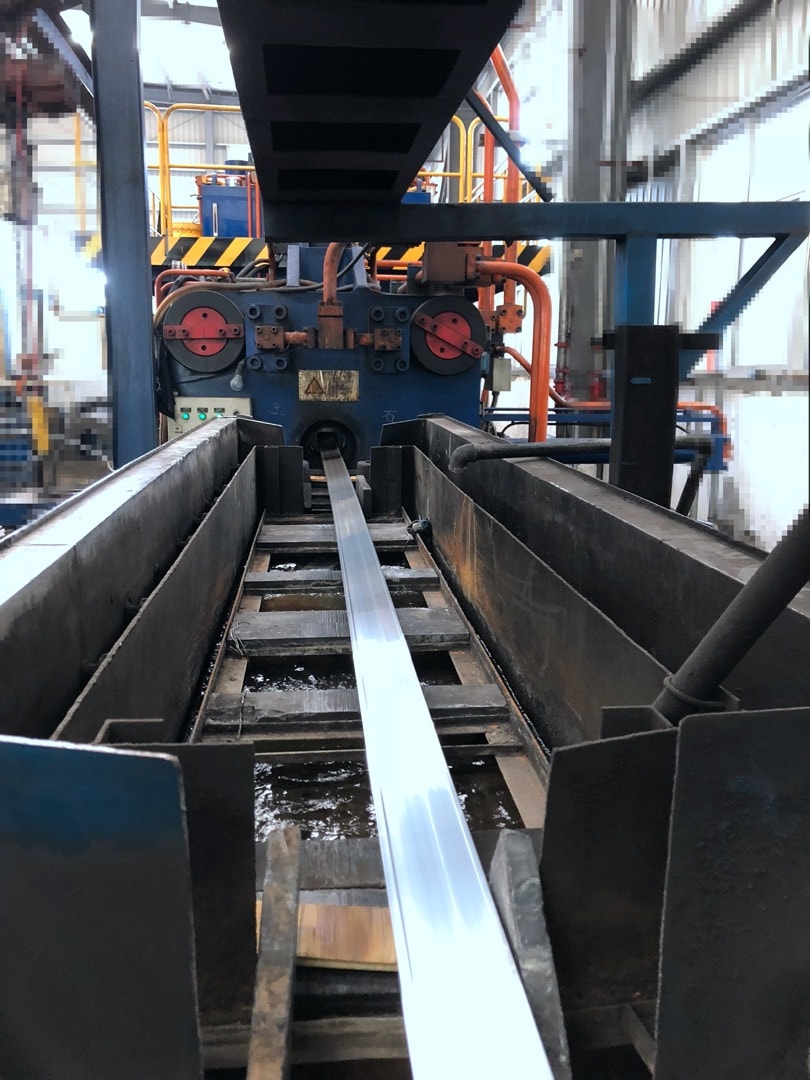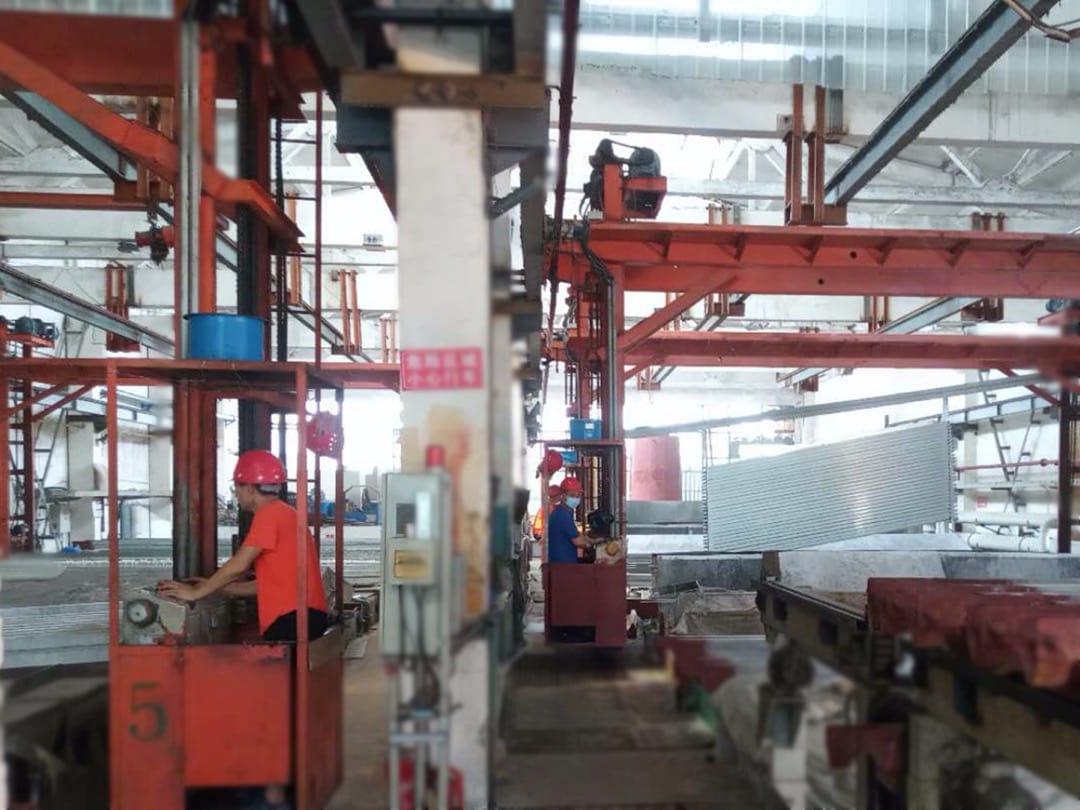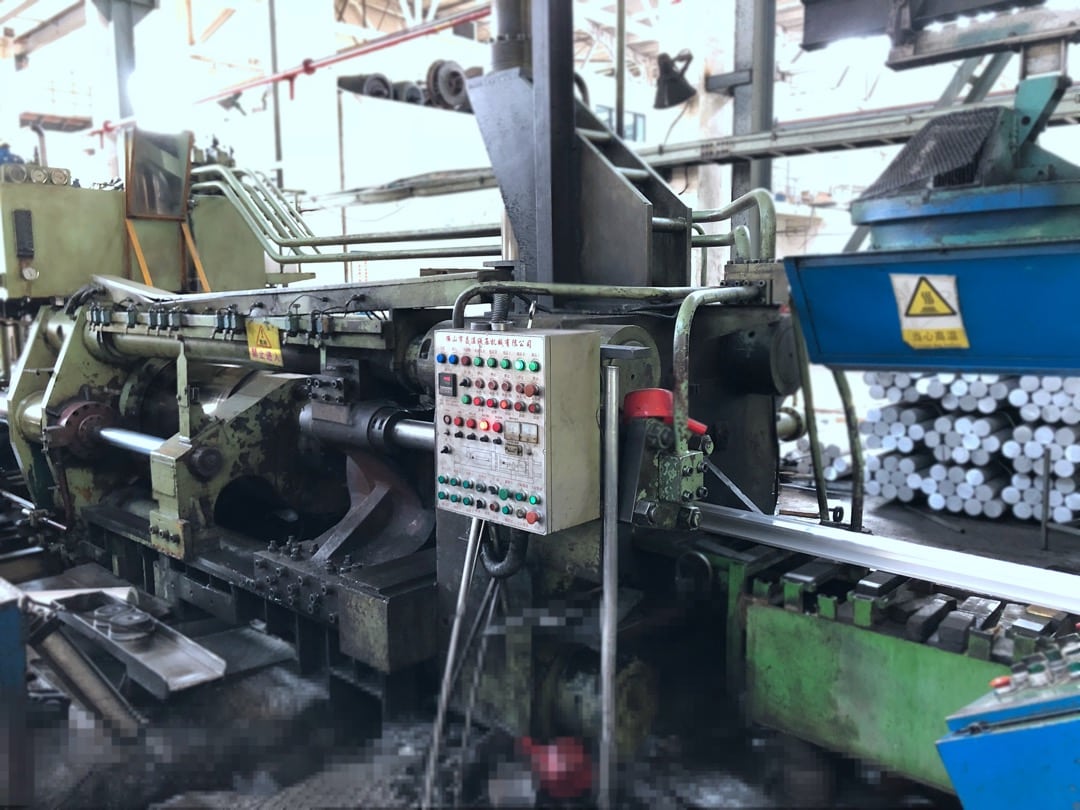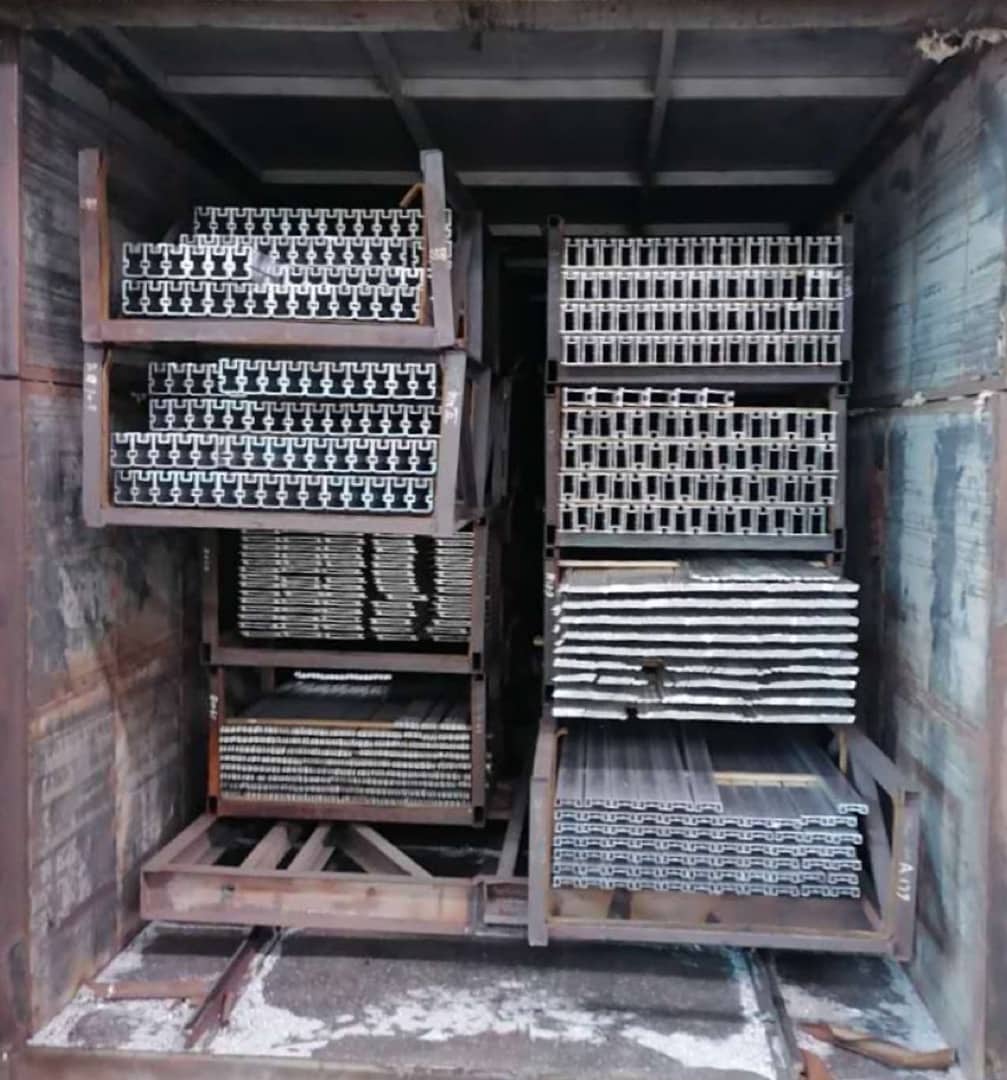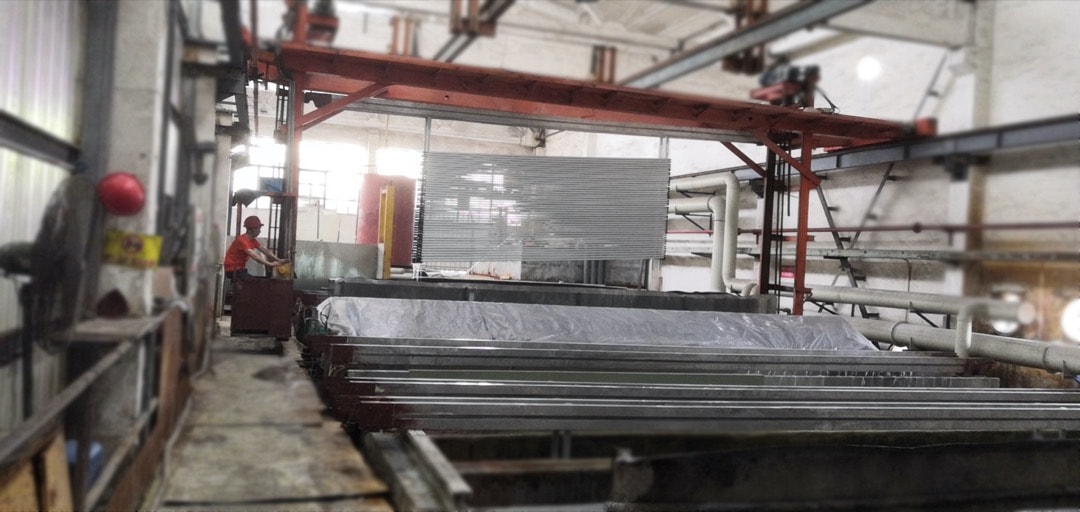Aluminum extrusions play a critical role in a wide variety of industries and applications due to their highly desirable features, including their durability, lightweight, and versatility. At Source International, we offer custom aluminum extrusion services from product design and die-making to finishing and packaging. No matter your application, we can deliver highly accurate aluminum extrusions that adhere to the tightest tolerances.
Custom Aluminum Extrusion Explained
Custom aluminum extrusion entails heating an aluminum alloy and pushing it through a die with a specific cross-sectional shape. The process leverages a firm ram to push the aluminum through the die, causing it to emerge from the other side in the same shape as the die pattern. The newly formed extrusion is then pulled out along a runout table for cooling. Depending on your product specifications, the die’s opening can be altered to create various shapes and sizes.
There are two primary types of aluminum extrusions: direct extrusion and indirect extrusion.
- Direct extrusion. This is the most commonly used aluminum extrusion technique. During this process, an extruder places a billet or heated aluminum in a container with hot walls, after which a ram forcefully pushes it through the die opening. This step generates a high amount of pressure. Additionally, machinists typically use material blocks to separate the heated aluminum (billet) and the ram to prevent them from coming into contact.
- Indirect extrusion. This process involves moving the heated aluminum and the container concurrently while the die remains in the same position. Typically, machinists leverage a “stem” to undertake this operation. The stem should be longer than the length of the container to force the aluminum billet through the stationary die.

Aluminum Extrusion Products from Source International
Aluminum extrusion products from Source International are produced by a process in which heated aluminum alloy material is forced through a die with a predesigned cross-sectional profile. Aluminum extrusion parts are widely used throughout construction, machinery, home appliances, and various other applications.
To meet a range of needs, we can produce aluminum extrusions in various profile shapes, including:
- Solid (i.e. rod, beam)
- Hollow (i.e. rectangular tube)
- Semi-Hollow (i.e. various channels, heat sink)
The aluminum extrusion process begins with the product design. The design of the product based on its intended use determines the production parameters. Questions regarding function, machinability, finishing, and use environment will lead to the choice of alloy. The function of the profile will determine the design of its form and, hence, the design of the die that shapes it.
Our ISO 9001-certified facilities focus on the most advanced, state-of-the-art aluminum extrusion equipment, giving us the capability to deliver a diverse set of parts for a wide range of industries, including agriculture, automotive, industrial machines, HVAC, and many others. Common materials used at our factories are 6061 and 6063 alloy, among many others.
Starting with your AutoCAD, IGES, PDF, or SolidWorks file, our expert team produces your custom parts with tight tolerances that always meet your specifications. Regardless of the complexity of your design, we’ll find the best way to meet your needs in a timely, cost-effective manner.
Primary Considerations for Aluminum Extrusion Products
Once we’ve developed the shape of the profile and selected the appropriate aluminum alloy, the next step is to produce an extrusion die. Once the extrusion die is prepared, the billet and extrusion tools are preheated to ready them for the extrusion process.
The Extrusion Process
Our aluminum extrusion process follows these key steps:
Billet
The aluminum extrusion process uses raw material referred to as the billet. The extrusion process starts with softening the aluminum billet in a furnace. Extrusion operations typically take place with the billet heated to temperatures in excess of 700°F (375°C).
Extrusion
The actual extrusion process begins when the ram starts applying pressure (from 100 tons to 15,000 tons of pressure ) to the billet within the container anywhere. The pressure of a press determines how large an extrusion it can produce. The completed extrusion is cut off at the die and the remainder of the metal is removed to be recycled. Depending on billet size and die opening, a continuous extrusion as long as 200 feet long may be produced with each stroke of the press.
Cooling
The newly-formed extrusion is supported on a runout conveyor as it leaves the press and begins to cool, either naturally or through the use of air or water quenches. This is a critical step to ensure sufficient metallurgical properties after aging. The extrusion is then transferred to a cooling table. A “stretcher” may be employed after the profile has been quenched (cooled) to straighten the extrusion and correct any twist that may have occurred during the extrusion process.
Heat Treatment
After the aluminum extrusion is cut to the specified commercial length, it is normally put into an oven and heat treated to achieve T5 or T6 temper. Aluminum extrusions reach their optimal strength through the process of aging or heat-treating. Heat-treated alloys are further strengthened or hardened through controlled thermal treatments that affect the metallurgical structure of the alloys. The heat treatment process ensures the uniform precipitation of fine particles through the metal, yielding maximum strength, hardness, and elasticity for the specific extrusion alloy.
Finishing
After heat treatment, the extrusion can be fabricated (cut, machined, bent, welded, etc.) or finished (anodizing or painted). Though aluminum alloys are more corrosion-resistant than regular steel, depending on which aluminum alloy is used, some corrosion may develop after a period of time. To enhance corrosion resistance on aluminum, anodizing is commonly used as a surface finishing. Its thick oxide layer helps to improve the corrosion resistance and also makes it more abrasion-resistant. Powder coating can also be applied to aluminum extrusion parts to provide a thicker layer on the surface for protection. Powder coating also offers more options for colors.
Custom Aluminum Extrusion Services Source International
At Source International, we have the necessary skills and experience to deliver high-quality custom aluminum extrusions that meet your specific requirements. We use high-performance systems that are specifically engineered to provide optimal repeatability with minimal energy consumption. For more information about our capabilities, or to get started on your custom aluminum extrusion solution, contact us today.

